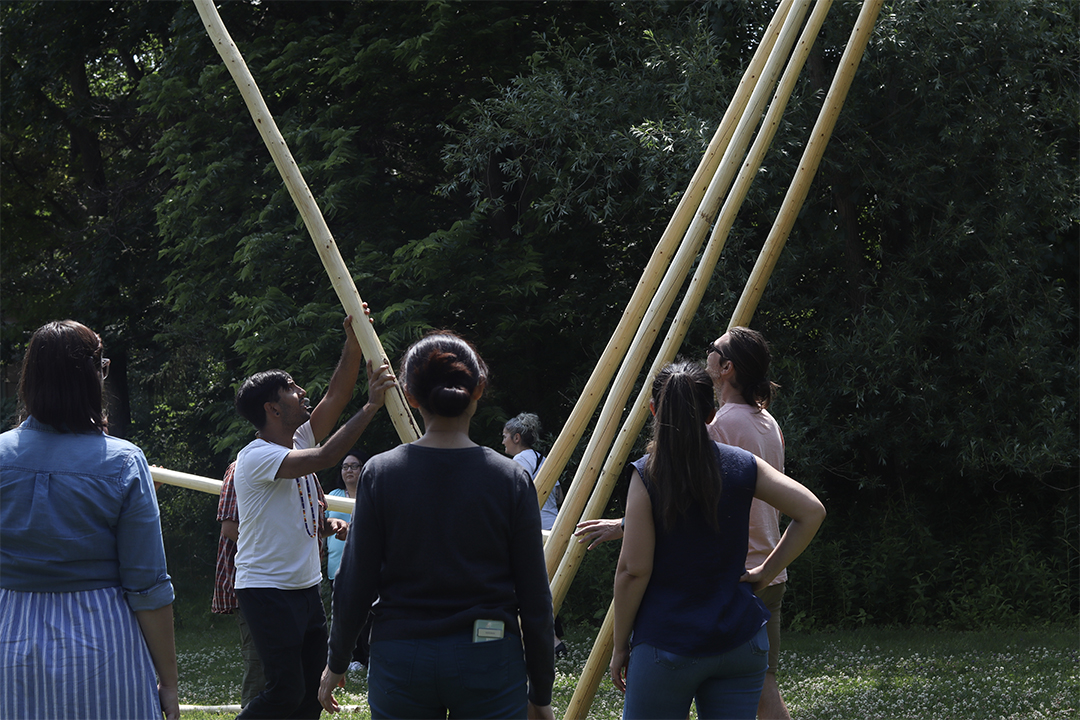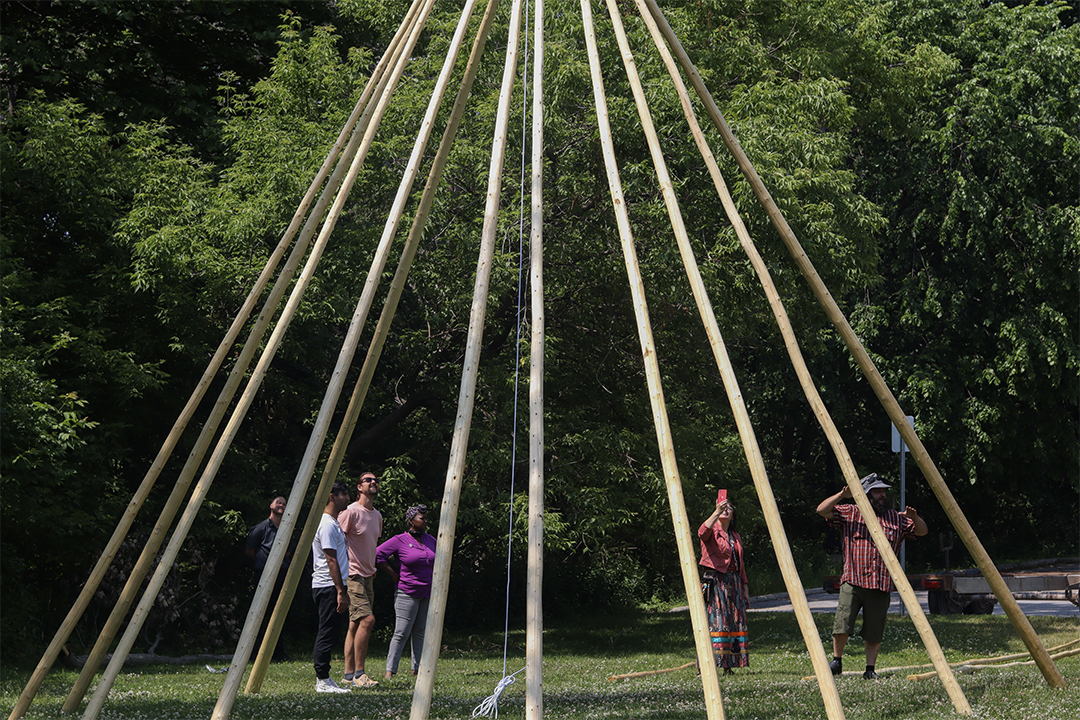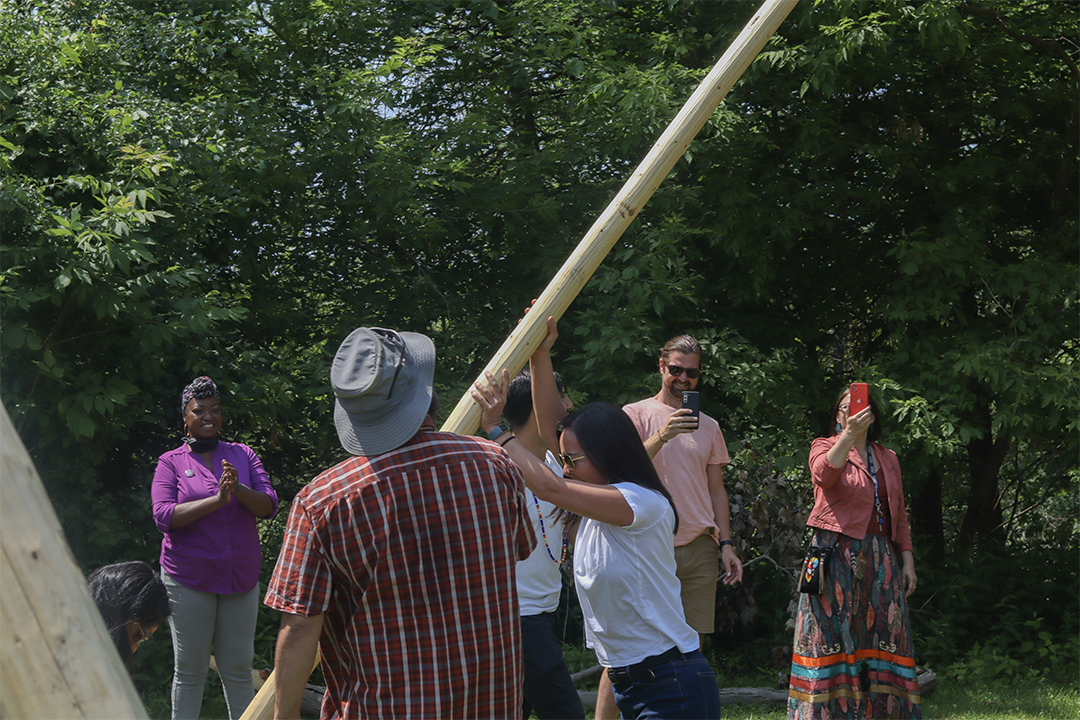On June 19, the Department of Student Life and the UTSC Indigenous Initiatives office held a Tipi launch event for the UTSC community. In commemoration of Indigenous History Month, the event aimed to create Indigenous spaces on campus while recognizing Indigenous ways of knowledge and doing.
Student reflections
In an interview with The Varsity, De-Mario Knowles, a second-year double majoring in neuroscience and mental health studies and minoring in French who identifies as Indigenous, described the event as an opportunity to embrace Indigenous culture and interact with other Indigenous students on campus.
“I’m really glad that we have this space,” said Knowles. “We’re moving forward in the right direction for reconciliation.”
Giselle Del Valle is a third-year psychology student and a member of Six Nations Grand River who identifies as mixed race, with Japanese, Boricua, and Mohawk — or Kanienʼkehá꞉ka — heritage. She explained that, although Tipis are not part of her culture, and are more associated with Western Cree and Blackfoot groups, she’s looking forward to the space the Tipi will create. “I’ve always gone to other Tipis for sharing circles and speaking with other elders, and they’ve always been a safe space for me,” she said in an interview with The Varsity.
“Campus feels pretty colonial,” said Del Valle. She explained that creating these spaces allows Indigenous students to smudge without fear of judgment or without having to constantly explain Indigenous practices.

The event
The event began with a smudging ceremony to help cleanse the body and spirit of the participants. Juanita Muise, Indigenous Engagement Coordinator, performed a welcome song as well. Muise explained that the song was revitalized from her community back home, Qalipu First Nation, which is located on the West Coast of Newfoundland.
David Lundberg, founder of Sewn Home — an Indigenous-led manufacturing business that specializes in tent and Tipi production — taught the participants how to set and create the Tipi.
Lundberg, who identifies as a member of the Bear Clan, explained that the Tipi’s structure served a purpose. For him, the community that makes the structure is sacred rather than the structure itself.

In an email to The Varsity, Muise explained that unlike the UTM and UTSG campuses, “UTSC did not have a designated space for Indigenous ceremony, drumming, smudging, or for the community to gather.”
“I’ve always struggled with finding spaces for our Indigenous community to gather for more culturally related events and have been pushing to have a tipi,” wrote Muise. “This past year there was some extra funding so I proposed the tipi to my management team and they supported my vision for decolonizing and creating Indigenous spaces on our campus.”
Muise hopes that the space will provide Indigenous elders and knowledge keepers with a space to share knowledge authentically. She adds that the space will also allow Indigenous students to gather, smudge, and feast without seeking permission.
For the non-Indigenous UTSC community, Muise hopes that the space will give community members an opportunity to learn from Indigenous ways of knowing and doing as well as learn more about truth and reconciliation through the Tipi.



No comments to display.